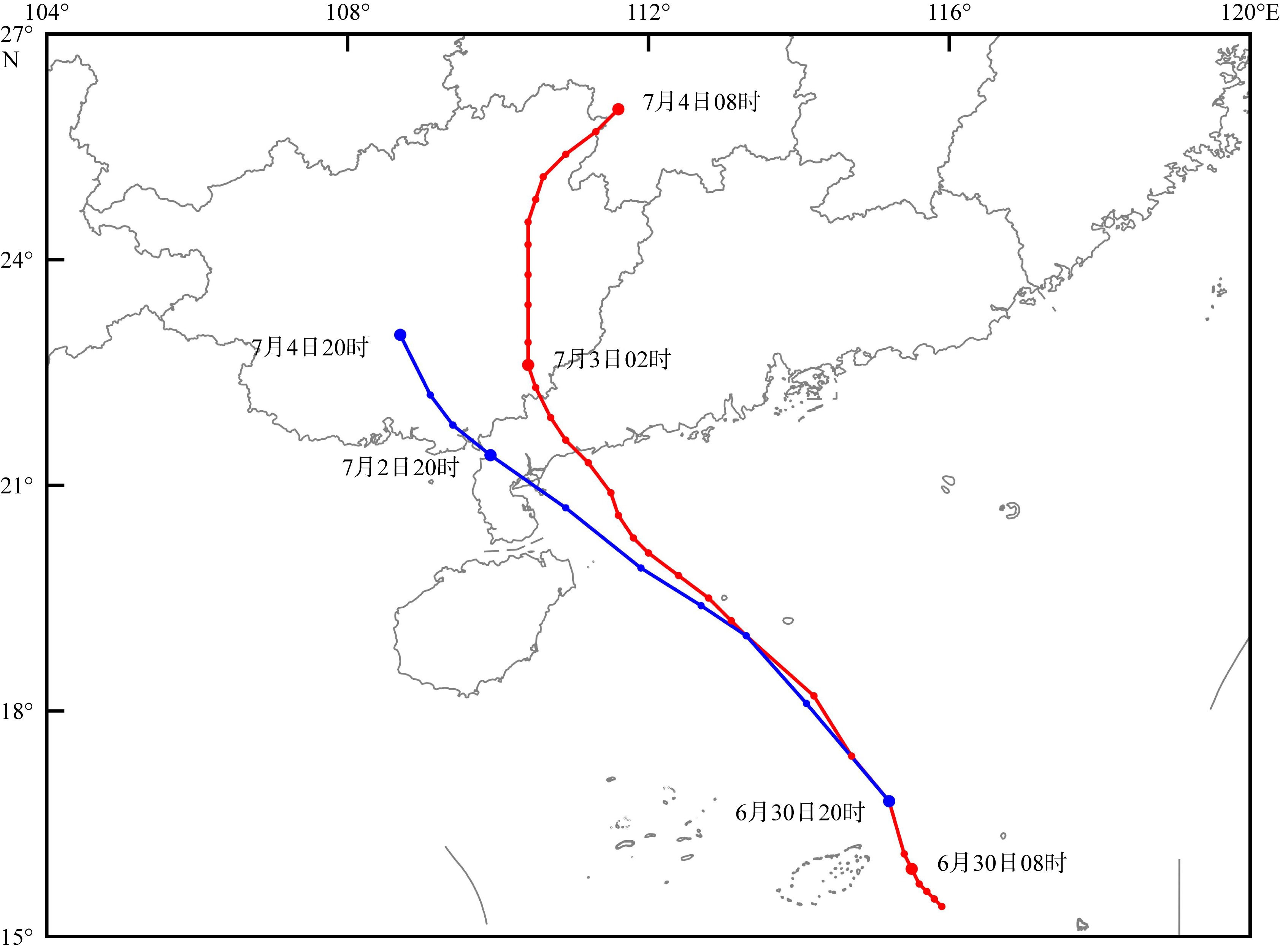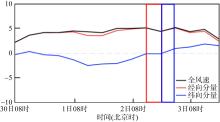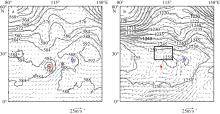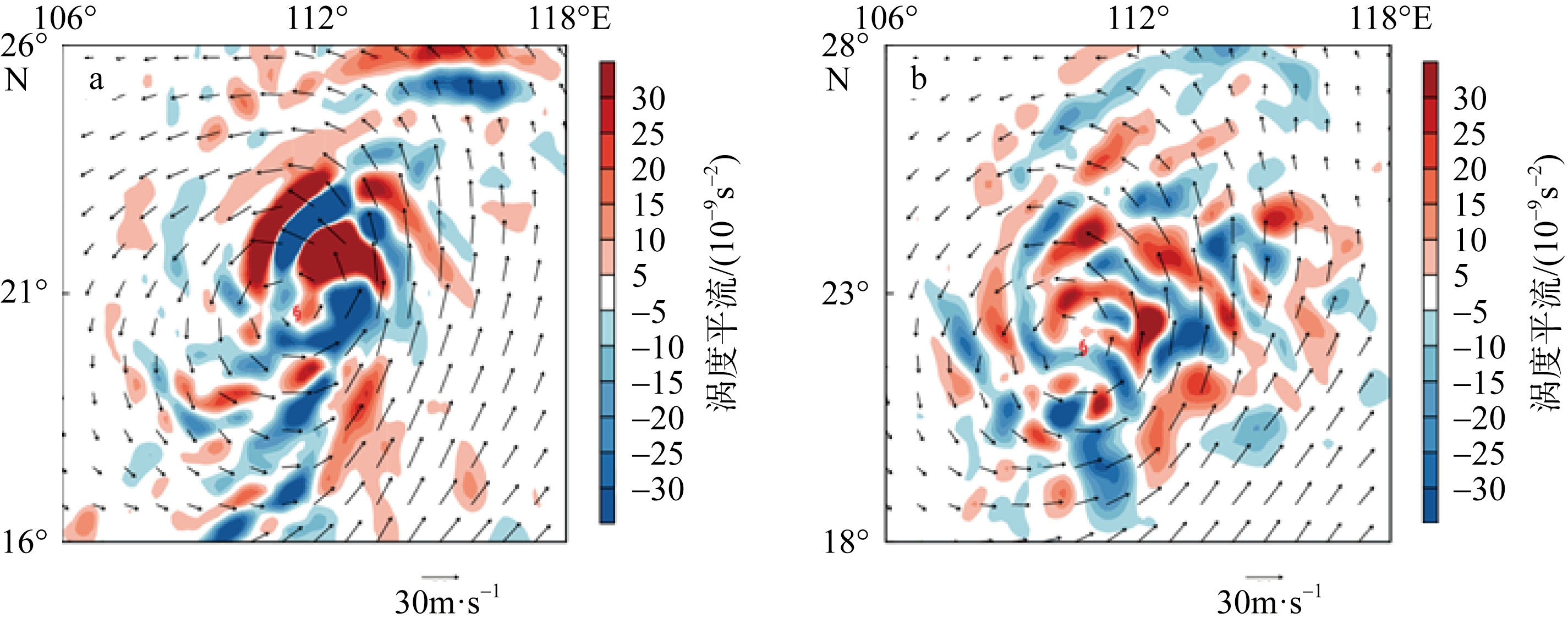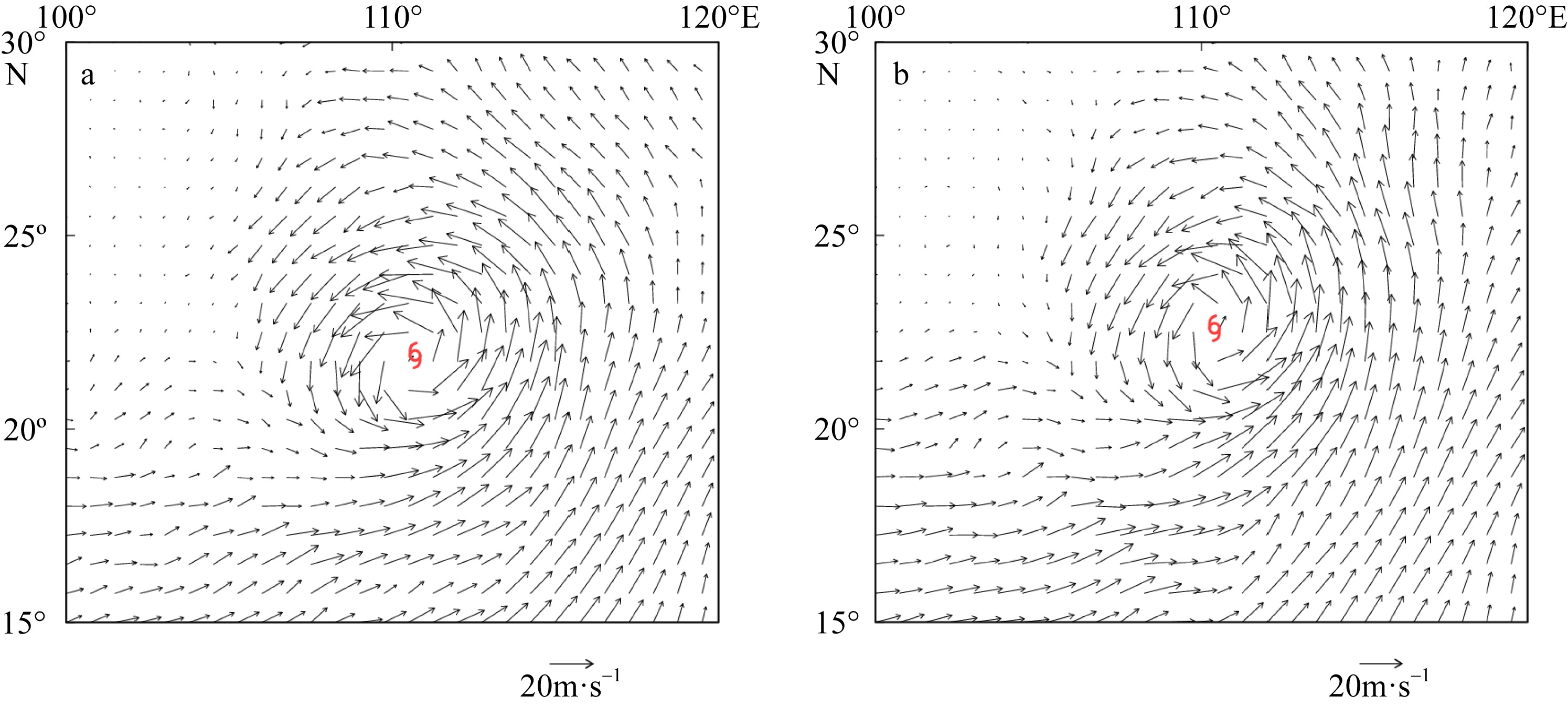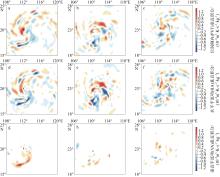Journal of Tropical Oceanography ›› 2025, Vol. 44 ›› Issue (4): 67-76.doi: 10.11978/2024239
• Marine Meteorology • Previous Articles Next Articles
Diagnostic analysis and causes of the northward turning path of typhoon Chaba after landfall
ZHOU Yunxia( ), ZHAI Liping(
), ZHAI Liping( ), QIN Hao, HUANG Qing, QI Liyan
), QIN Hao, HUANG Qing, QI Liyan
- Guangxi Meteorological Observatory, Nanning 530022, China
-
Received:2024-12-23Revised:2025-01-25Online:2025-07-10Published:2025-07-31 -
Contact:ZHAI Liping -
Supported by:Natural Science Foundation of Guangxi(2022GXNSFBA035565)
CLC Number:
- 732.4
Cite this article
ZHOU Yunxia, ZHAI Liping, QIN Hao, HUANG Qing, QI Liyan. Diagnostic analysis and causes of the northward turning path of typhoon Chaba after landfall[J].Journal of Tropical Oceanography, 2025, 44(4): 67-76.
share this article
Add to citation manager EndNote|Reference Manager|ProCite|BibTeX|RefWorks
| [1] |
毕鑫鑫, 陈光华, 周伟灿, 2018. 超强台风“天鹅”(2015)路径突变过程机理研究[J]. 大气科学, 42(1): 227-238.
|
|
|
|
| [2] |
陈联寿, 徐祥德, 罗哲贤, 等, 2002. 热带气旋动力学引论[M]. 北京: 气象出版社: 222-227.
|
|
|
|
| [3] |
陈蓉, 谭锐志, 林元弼, 1996. 热带气旋内部非对称积云对流对其移动的影响[J]. 大气科学, 20(2): 195-201.
|
|
|
|
| [4] |
陈渭民, 2005. 卫星气象学[M]. 北京: 气象出版社: 343-344 (in Chinese).
|
| [5] |
《广西天气预报技术和方法》编写组, 2012. 广西天气预报技术和方法[M]. 北京: 气象出版社: 208-209 (in Chinese).
|
| [6] |
韩鼎妍, 李敏, 胡睿, 等, 2024. 秋季登陆广东热带气旋特征变化及机制分析[J]. 热带海洋学报, 43(1): 64-78.
|
|
|
|
| [7] |
姜丽萍, 夏冠聪, 尤红, 等, 2008. “珍珠” 台风强度及路径异常的分析[J]. 台湾海峡, 27(1): 124-128.
|
|
|
|
| [8] |
金荣花, 高拴柱, 顾华, 等, 2006. 近31年登陆北上台风特征及其成因分析[J]. 气象, 32(7): 33-39.
|
|
|
|
| [9] |
李瑞芬, 袁月, 郭卫华, 等, 2021. 2018年台风“摩羯” 和“温比亚” 路径的影响因子分析[J]. 气象科技, 49(3): 427-436.
|
|
|
|
| [10] |
李泽椿, 张玲, 钱奇峰, 等, 2020. 中央气象台台风预报业务的发展及思考[J]. 大气科学学报, 43(1): 10-19.
|
|
|
|
| [11] |
刘爱鸣, 林毅, 吴幸毓, 2010. 台湾岛及邻近区域热带气旋异常路径特征分析[J]. 气象, 36(9): 29-35.
|
|
|
|
| [12] |
刘开源, 戴竹君, 姜有山, 等, 2024. 台风“烟花” 缓慢移动的机理研究: 远距离双台风相互作用[J]. 气象科学, 44(2): 308-316.
|
|
|
|
| [13] |
钱传海, 端义宏, 麻素红, 等, 2012. 我国台风业务现状及其关键技术[J]. 气象科技进展, 2(5): 36-43.
|
|
|
|
| [14] |
史得道, 易笑园, 刘彬贤, 2014. 台风“达维”不对称结构特征分析[J]. 气象与环境学报, 30(3): 10-17.
|
|
|
|
| [15] |
束艾青, 许冬梅, 李泓, 等, 2022. FY-3D卫星MWHS-2辐射率资料直接同化对台风“米娜”预报的影响[J]. 热带海洋学报, 41(5): 17-28.
doi: 10.11978/2021160 |
|
|
|
| [16] |
孙泽铭, 韩树宗, 王明杰, 等, 2024. 不同路径台风对中国近海海温的影响特征统计分析[J]. 热带海洋学报, 43(5): 17-31.
|
|
|
|
| [17] |
王斌,
|
|
|
|
| [18] |
王海平, 2023. 高空冷涡对台风烟花(2106)路径的影响[J]. 应用气象学报, 34(5): 586-597.
|
|
|
|
| [19] |
王敏, 尹义星, 陈晓旸, 等, 2020. 异常北折台风“洛坦”与异常西折台风“奥玛”路径的对比及预报[J]. 热带海洋学报, 39(1): 53-65.
doi: 10.11978/2019042 |
|
doi: 10.11978/2019042 |
|
| [20] |
王新伟, 罗哲贤, 马革兰, 等, 2015. 热带气旋Meranti(2010)异常路径的成因分析[J]. 大气科学学报, 38(1): 37-45.
|
|
|
|
| [21] |
温典, 李英, 魏娜, 等, 2019. 高空冷涡影响台风Meranti(1010)北翘路径的集合预报分析[J]. 大气科学, 43(4): 730-740.
|
|
|
|
| [22] |
文永仁, 戴高菊, 龚月婷, 等, 2017. 我国台风路径突变研究进展[J]. 气象科技, 45(6): 1027-1035.
|
|
|
|
| [23] |
吴胜蓝, 漆梁波, 邹兰军, 2023. 台风灿都路径预报中的非绝热加热因子分析[J]. 气象, 49(7): 805-818.
|
|
|
|
| [24] |
许映龙, 张玲, 高拴柱, 2010. 我国台风预报业务的现状及思考[J]. 气象, 36(7): 43-49.
|
|
|
|
| [25] |
袁敏, 平凡, 李国平, 2018. 位涡倾向在Muifa台风路径转折中的应用[J]. 大气科学, 42(2): 281-291.
|
|
|
|
| [26] |
于慧珍, 马艳, 韩旭卿, 等, 2022. 台风“摩羯” 路径转折预报和诊断分析[J]. 干旱气象, 40(6): 1014-1023.
doi: 10.11755/j.issn.1006-7639(2022)-06-1014 |
|
|
|
| [27] |
周玉淑, 冉令坤, 2010. 平流涡度方程及其在2006年Bilis台风分析中的应用[J]. 物理学报, 59(2): 1366-1377.
|
|
|
|
| [28] |
|
| [29] |
|
| [30] |
|
| [1] | LI Zhuo, LI Weibiao, ZHANG Aoqi. Analysis of diurnal variation characteristics of precipitation over South China before typhoon landfall [J]. Journal of Tropical Oceanography, 2022, 41(2): 26-37. |
| [2] | ZHU Wentao, XIA Jingquan, LIU Xiangbo, YIN Hongyang, ZHU Ming, REN Yuxiao, XIE Minrui, HUANG Jianzhong, LI Xiubao. Analysis of photosynthetic physiology and symbiotic fungi community in Galaxea fascicularis [J]. Journal of Tropical Oceanography, 2022, 41(2): 132-141. |
| [3] | Juan Li, Junliang Liu, Shuqun Cai. Numerical simulation of oceanic near-inertial energy induced by Typhoon Conson [J]. Journal of Tropical Oceanography, 2020, 39(2): 35-43. |
| [4] | Peini QI, Feifei SHEN, Leilei KOU, Zhigang CHU, Dongmei XU. Experiments of assimilating Doppler radar data in forecast of Typhoon Chanthu [J]. Journal of Tropical Oceanography, 2019, 38(2): 20-31. |
| [5] | WANG Chen-xi. Ensemble prediction of typhoon Muifa’s track and intensity [J]. Journal of Tropical Oceanography, 2014, 33(6): 48-60. |
| [6] | ZHANG Guang-ping, XIE Zhong, LUO Xian-gang, ZHANG Chen-xiao. The Hainan typhoon disaster command management systems based on WebGIS [J]. Journal of Tropical Oceanography, 2014, 33(6): 80-87. |
| [7] | LIU Bei, LU Shao-zong, QIAN Yu-kun, PENG Shi-qiu. An application of ATOVS radiance in data assimilation of typhoon [J]. Journal of Tropical Oceanography, 2014, 33(1): 44-53. |
| [8] | SUN Huihang, WANG Yiguo, LUO Jingjia. Impact of ocean data assimilation on initial conditions and skills of seasonal-to- interannual climate prediction [J]. Journal of Tropical Oceanography, 2022, 41(3): 75-90. |
|
||



